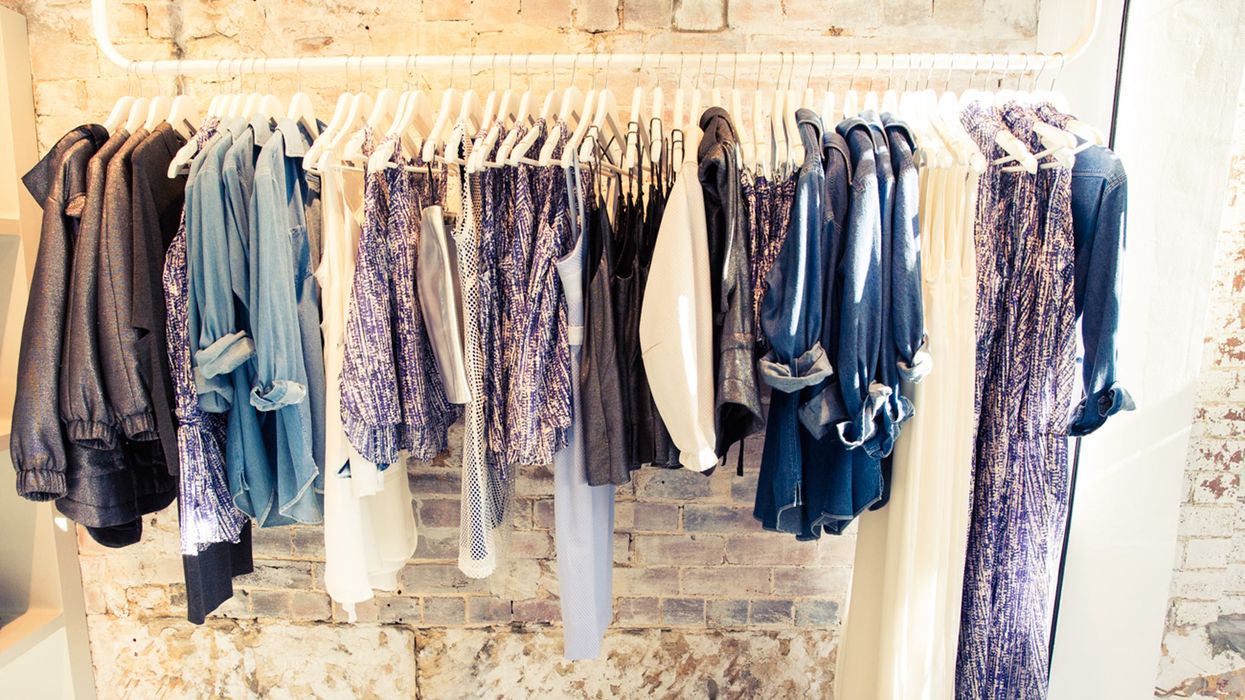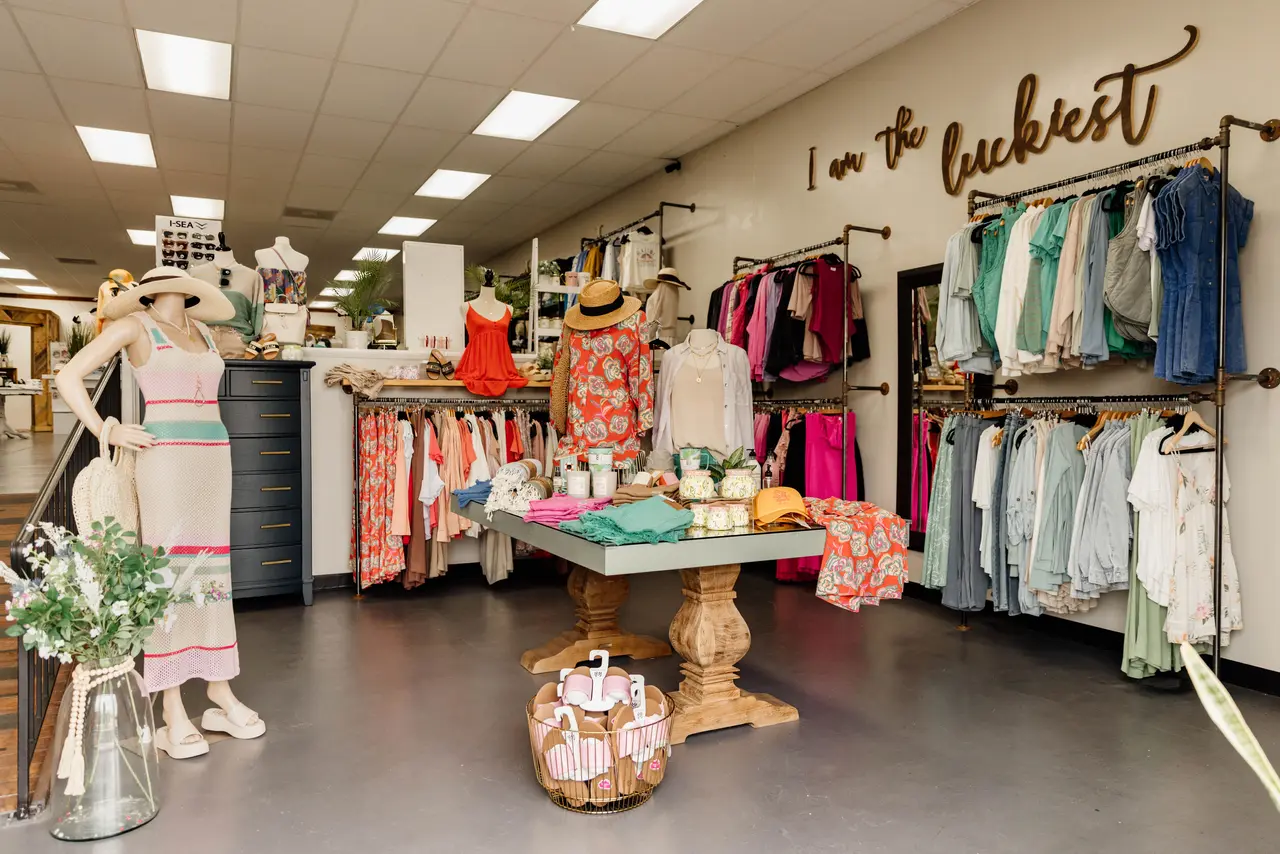Discover the Latest Patterns in Boutique Fashion for every single Season
Discover the Latest Patterns in Boutique Fashion for every single Season
Blog Article
Lasting Fashion: Just How Eco-Friendly Garments Is Shaping the Future of Design
As the fashion business deals with raising scrutiny over its ecological impact, the increase of lasting fashion uses a promising choice that straightens style with ecological duty. Employing cutting-edge products such as plant-based materials and recycled fibers, along with advanced methods like digital and 3D printing, designers are redefining what it means to be fashionable in the modern age. Concurrently, the expanding appeal of upcycling and second hand culture is fostering a shift towards a circular economy. Yet, how does this activity really affect the future trajectory of fashion, and what difficulties exist ahead in its extensive fostering?
Cutting-edge Sustainable Materials
As the style industry grapples with its environmental impact, ingenious lasting materials have actually emerged as a vital service for minimizing environmental footprints. These materials not only reduce reliance on fossil gas yet additionally lessen harmful chemical use and water consumption.
In addition to plant-based materials, advancements in biofabrication have actually led to the advancement of lab-grown fabrics. Mycelium natural leather, stemmed from mushroom roots, provides a functional and eco-friendly option to animal leather. Its production causes considerably reduced carbon emissions and water use, making it an extra sustainable choice for style designers seeking to straighten with green practices.
Recycled materials are also acquiring traction, with polyester made from recycled plastic bottles representing a considerable innovation. This development not just draws away plastic waste from oceans and garbage dumps but also lowers power usage compared to creating virgin polyester. Together, these products underscore the capacity for a more sustainable fashion business, paving the means for environmentally aware layout and manufacturing.
Eco-Conscious Production
Structure on the innovations in lasting products, the fashion business is additionally re-evaluating its production processes to additionally minimize ecological impact. Key techniques include reducing water intake, decreasing carbon exhausts, and removing hazardous chemicals. By embracing closed-loop systems, producers intend to reuse water and power efficiently, considerably lessening waste. The assimilation of renewable resource resources, such as solar and wind power, into manufacturing centers additionally stops dependence on fossil gas.
Another essential aspect is the decrease of poisonous chemicals generally utilized in coloring and finishing fabrics. Eco-conscious makers are changing in the direction of plant-based dyes and waterless dyeing technologies, which not just secure local ecological communities but also enhance employee safety. Advancements like digital printing lower textile waste and energy usage, using a cleaner option to conventional approaches.
With the development of blockchain modern technology, firms can now provide in-depth understandings right into their supply chains, making sure moral and ecologically friendly practices at each action. As the need for eco-conscious items grows, suppliers are forced to introduce, guaranteeing that the future of fashion is both sustainable and stylish.
The Increase of Upcycling
Upcycling, a transformative method in lasting style, entails artistically repurposing discarded materials into new, high-quality products. This cutting-edge strategy not only reduces waste yet also lessens the need for raw materials, therefore minimizing the ecological impact of clothing manufacturing. By reimagining and rebuilding existing things, developers and fashion brands have the ability to infuse creativity into their collections while advertising ecological duty.

Moreover, the upcycling movement has actually encouraged independent developers and tiny organizations, who commonly lead in innovation because of their agility and imagination. By maximizing the bountiful schedule of unused materials, these entities add to a circular economy, showing that fashion can be both sustainable and fashionable. Through upcycling, the industry takes considerable strides in the direction of a more liable and conscious future.
Thrift Society's Influence
The expanding second hand culture considerably reshapes the landscape of lasting style, emphasizing the value of mindful usage. This social change encourages consumers to embrace secondhand clothes, thereby reducing the demand for new garment production and minimizing environmental effect. Thrift buying not only expands the lifecycle of apparel yet also lowers the carbon impact connected with production, carrying, and disposing of clothing.
A vital facet of thrift society is its democratization of style. By supplying a large variety of styles from numerous ages at affordable rates, thrift shops make fashion accessible to a more comprehensive audience. This ease of access promotes a feeling of individuality and creative thinking, as consumers mix and suit distinct items to curate individualized wardrobes without adding to the rapid style cycle.
In addition, second hand culture advertises circularity in style, straightening with the principles of a circular economic situation. As more consumers and developers embrace second hand society, the fashion industry have a peek at this site is compelled to adjust, integrating sustainable practices to meet the growing need for eco-conscious alternatives.

Future Trends in vogue
Fashion's advancement is increasingly formed by sustainability-driven initiatives and technological innovations. As customers end up being more environmentally aware, the industry is reacting with groundbreaking advancements that redefine the future of design. One noticeable fad is the surge of digital style, where online garments can be put on in augmented fact settings, considerably lowering material waste. This change not just deals with the digital-savvy customer but likewise decreases the environmental footprint typically connected with garment production.
Additionally, the assimilation of blockchain technology supplies brand-new opportunities in transparency and traceability, permitting consumers to validate the sustainability credentials of their garments. boutique fashion. This makes sure responsibility in supply chains and advertises ethical sourcing methods. 3D printing is yet another innovation that guarantees to revolutionize making procedures by allowing on-demand production, thereby decreasing excess inventory and waste
Additionally, the advancement of bio-fabricated products, such as lab-grown natural leather and plant-based fabrics, presents sustainable alternatives to standard materials. These developments minimize reliance on pet products and resource-intensive plants. As these modern technologies mature, they are poised to change the fashion landscape, combining style with sustainability. The future of style, consequently, hinges on a seamless mix of technology, advancement, and eco-friendly duty.
Final Thought
The transformation of the fashion industry via lasting methods indicates a pivotal change towards environmental liability. This advancement not only lines up fashion with eco-friendly sustainability however also sets a criterion for future patterns concentrated on obligation and technology.
As the style market faces increasing scrutiny over its environmental impact, the rise of sustainable fashion uses an encouraging alternative that lines up design with click this link eco-friendly duty.As the style sector grapples with its environmental impact, ingenious sustainable products have arised as a vital remedy for minimizing ecological impacts. Together, these materials emphasize the capacity for an extra sustainable fashion sector, leading the method for eco mindful style and production.
Building on the developments in sustainable materials, the style industry is additionally re-evaluating its production processes to better reduce environmental impact. boutique fashion.Upcycling, a transformative practice in sustainable style, entails creatively repurposing discarded products right into brand-new, premium products
Report this page